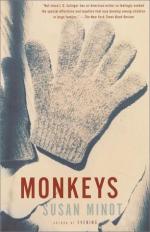|
This section contains 1,076 words (approx. 4 pages at 300 words per page) |

|
SOURCE: Rubin, Merle. “Old-Fashioned Fiction, by Design.” Christian Science Monitor (10 November 1992): 13.
In the following review, Rubin examines the structure of Folly, crediting the novel's protagonist for the work's “universal” relevance.
At a time when many novelists, like filmmakers and rock stars, vie to outdo one another in displays of graphic violence, sexual exploitation, and other shock tactics, there is something refreshing—even daring—about a novel that whisks readers back to the discreet and decorous world of Bostonian high society on the eve of the United States entry into World War I.
Susan Minot's Folly, her second novel, opens in 1917, with its sheltered but intelligent heroine, Lilian Eliot, poised on the brink of womanhood. Although the story unfolds through the jazz age, the stock market crash, and the Great Depression, Folly takes its predominant tone from that hypothetical age of innocence, America in the teens.
Indeed, Minot has...
|
This section contains 1,076 words (approx. 4 pages at 300 words per page) |

|


